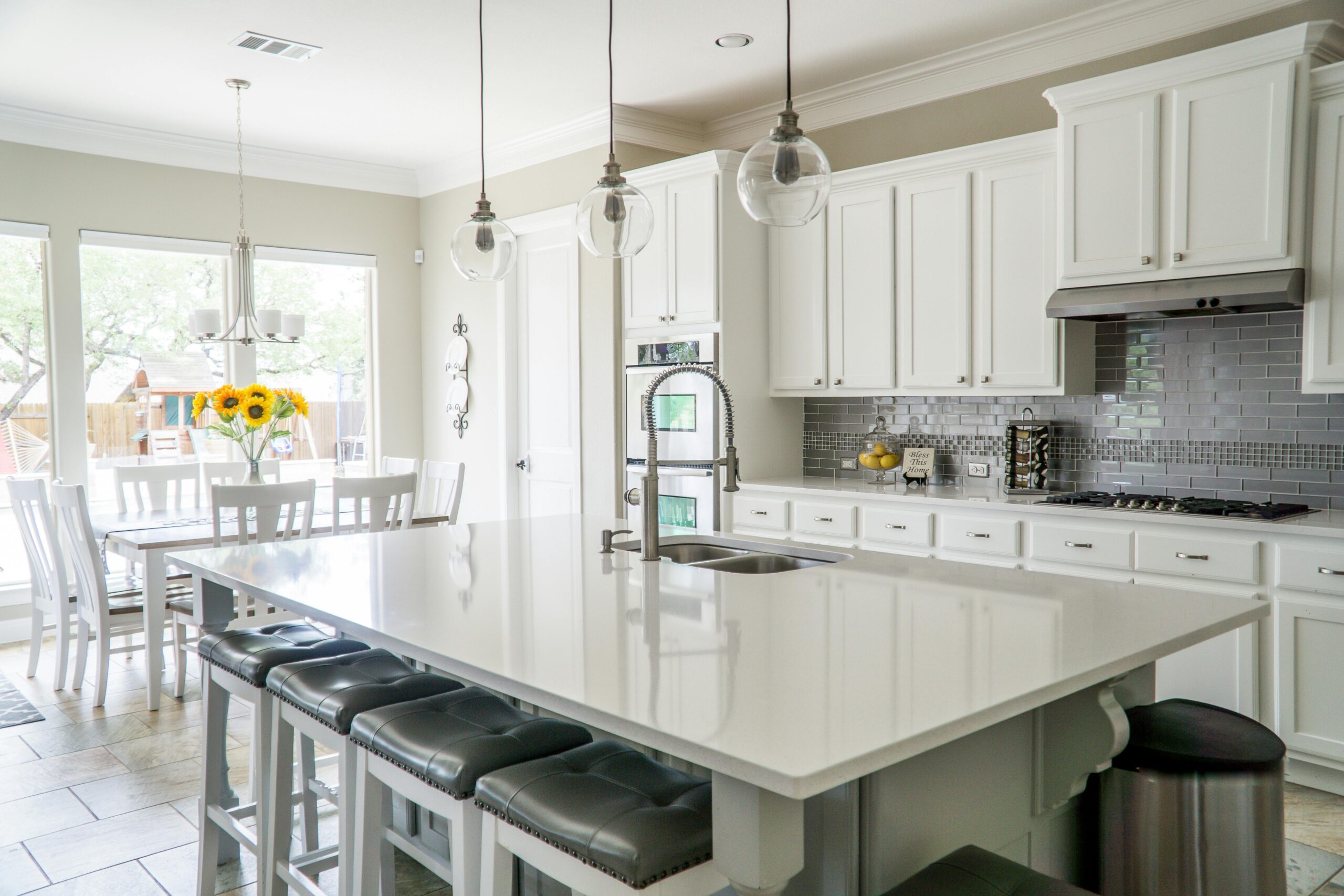Introduction
The kitchen is often referred to as the heart of the home, a space where culinary creativity thrives and families gather. However, to maximize the potential of this essential area, a functional kitchen layout is paramount. The right layout not only enhances workflow but also creates an inviting atmosphere for cooking and entertaining. In this article, we’ll explore various functional kitchen layouts, their benefits, and tips for choosing the best one for your home.
The Importance of a Functional Kitchen Layout
A well-designed kitchen layout is crucial for several reasons:
- Efficiency: A functional layout allows for an efficient workflow, minimizing unnecessary movements while cooking. This is particularly important for busy households where time is of the essence.
- Safety: Proper layouts can enhance safety by reducing the risk of accidents. For example, placing the stove away from high-traffic areas can prevent burns and spills.
- Space Utilization: Every kitchen is unique, and a functional layout ensures that all available space is utilized effectively. This is especially vital in smaller kitchens, where maximizing storage and counter space is key.
- Aesthetics: Beyond functionality, a well-planned layout contributes to the overall aesthetic appeal of the kitchen, making it a welcoming environment for family and guests.
- Adaptability: A good kitchen layout can adapt to changing needs, whether you’re entertaining guests, preparing a family meal, or simply enjoying a cup of coffee.
Popular Functional Kitchen Layouts
- The Work TriangleThe work triangle is a classic design principle that emphasizes the efficient arrangement of the stove, sink, and refrigerator. Ideally, these three elements should form a triangle, allowing for easy movement between them. This layout is versatile and can be adapted to various kitchen styles, whether it’s a small galley or a spacious open-concept design.Benefits:
- Streamlined workflow.
- Reduces time spent moving between stations.
- Encourages a natural flow in cooking and food preparation.
- Galley KitchenThe galley kitchen layout consists of two parallel counters with a walkway in between. This design is particularly effective in smaller spaces, allowing for efficient use of limited square footage.Benefits:
- Maximizes space in compact kitchens.
- Encourages efficient workflow due to proximity of key areas.
- Easy to keep organized, as everything is within reach.
- L-Shaped KitchenAn L-shaped kitchen features two walls that intersect at a right angle, creating an efficient working area. This layout is popular for open-concept homes, as it allows for easy interaction with adjacent living or dining areas.Benefits:
- Offers ample counter space for cooking and food prep.
- Easily integrates with other spaces, fostering social interaction.
- Provides flexibility for adding an island or additional storage.
- U-Shaped KitchenThe U-shaped kitchen layout surrounds the cook on three sides, providing extensive counter space and storage options. This layout is ideal for larger kitchens and is perfect for families who enjoy cooking together.Benefits:
- Abundant counter and storage space.
- Enhances workflow with multiple workstations.
- Provides a natural gathering area for family and friends.
- Island KitchenThe island kitchen layout features a central island that serves as both a workspace and a gathering place. This layout can be adapted to various styles, making it a favorite for modern homes.Benefits:
- Increases counter space and storage.
- Encourages social interaction while cooking.
- Offers versatility, as islands can serve multiple functions (e.g., dining, prep space).
- Peninsula KitchenSimilar to the island kitchen, a peninsula kitchen includes an extended countertop that juts out from a wall or cabinetry, creating a semi-island effect. This layout is ideal for smaller spaces where a full island may not fit.Benefits:
- Offers additional workspace without requiring a full island.
- Facilitates easy movement and interaction.
- Can provide additional seating options for casual dining.
- Open Concept KitchenThe open concept kitchen merges the cooking area with living and dining spaces, promoting a sense of connectivity and flow. This layout is especially popular in modern homes, where entertaining is a priority.Benefits:
- Enhances social interaction, making it easy to host gatherings.
- Maximizes natural light and creates a spacious feel.
- Offers flexibility in furniture arrangement and decor.
Tips for Designing a Functional Kitchen Layout
- Consider Your Cooking Habits Before finalizing a layout, assess how you typically use your kitchen. Do you cook frequently? Do you entertain guests? Understanding your habits will help determine the most efficient design.
- Maximize Storage Functional kitchen layouts incorporate ample storage solutions. Consider utilizing vertical space with tall cabinets, adding pull-out drawers, or incorporating pantry solutions to keep your kitchen organized.
- Plan for Traffic Flow Ensure there is enough space for movement within the kitchen. Leave clear pathways between work areas, and avoid placing appliances or furniture in high-traffic zones to prevent accidents.
- Invest in Quality Materials Choose durable materials for countertops, cabinets, and flooring. High-quality materials not only enhance the kitchen’s aesthetic appeal but also improve functionality and longevity.
- Incorporate Lighting Good lighting is essential for a functional kitchen. Incorporate task lighting above work areas, ambient lighting for general illumination, and accent lighting to highlight design features.
- Think About Ergonomics Consider the height of countertops, the placement of appliances, and the arrangement of work areas to ensure comfort while cooking. Ergonomic design can significantly enhance your cooking experience.
- Seek Professional Guidance If you’re unsure about the best layout for your kitchen, consider consulting a kitchen design expert. They can provide valuable insights and help you create a layout that meets your specific needs.
Trends in Functional Kitchen Layouts
- Sustainability Increasingly, homeowners are prioritizing sustainable materials and energy-efficient appliances. Incorporating eco-friendly options into your kitchen design can enhance functionality while benefiting the environment.
- Smart Technology The integration of smart technology into kitchen layouts is becoming more common. From smart appliances to automated lighting, these features enhance convenience and efficiency in the kitchen.
- Multi-Functional Spaces As homes evolve, so do kitchen layouts. Many homeowners are looking for ways to make their kitchens multi-functional, serving as both a cooking space and a social hub. This trend emphasizes flexible designs that can adapt to various needs.
- Minimalist Aesthetic Minimalism continues to influence kitchen design, with clean lines and uncluttered spaces being prioritized. Functional layouts that embrace simplicity and efficiency are increasingly popular.
- Personalization Homeowners are increasingly seeking to personalize their kitchen layouts to reflect their individual style. Custom cabinetry, unique color palettes, and bespoke design features allow for greater personalization.
Conclusion
A functional kitchen layout is essential for creating a space that is both efficient and enjoyable. By understanding the various layout options available and considering your specific needs, you can design a kitchen that enhances your cooking experience and complements your lifestyle. Whether you prefer the classic work triangle or the modern open concept, the right layout can transform your kitchen into a culinary oasis. For expert advice and tailored solutions, explore our range of functional kitchen layouts and start designing your dream kitchen today!

